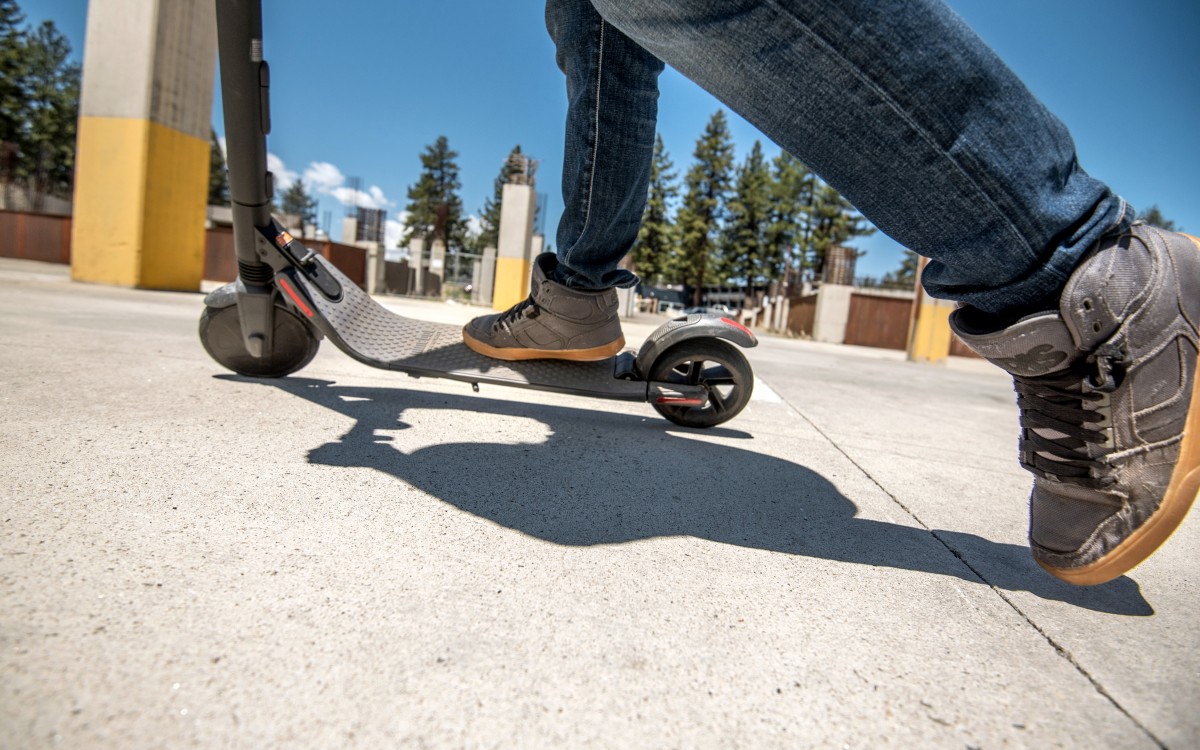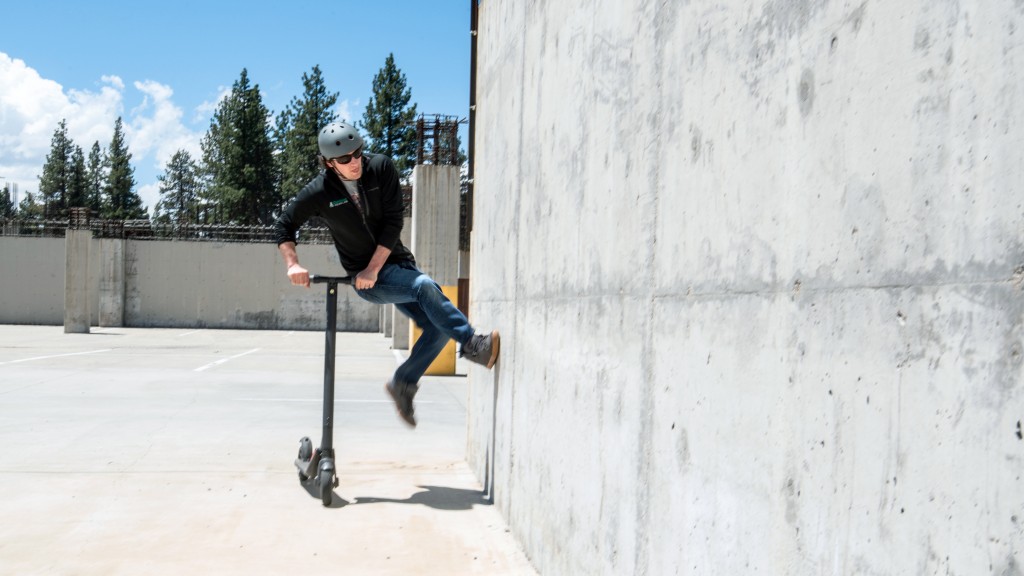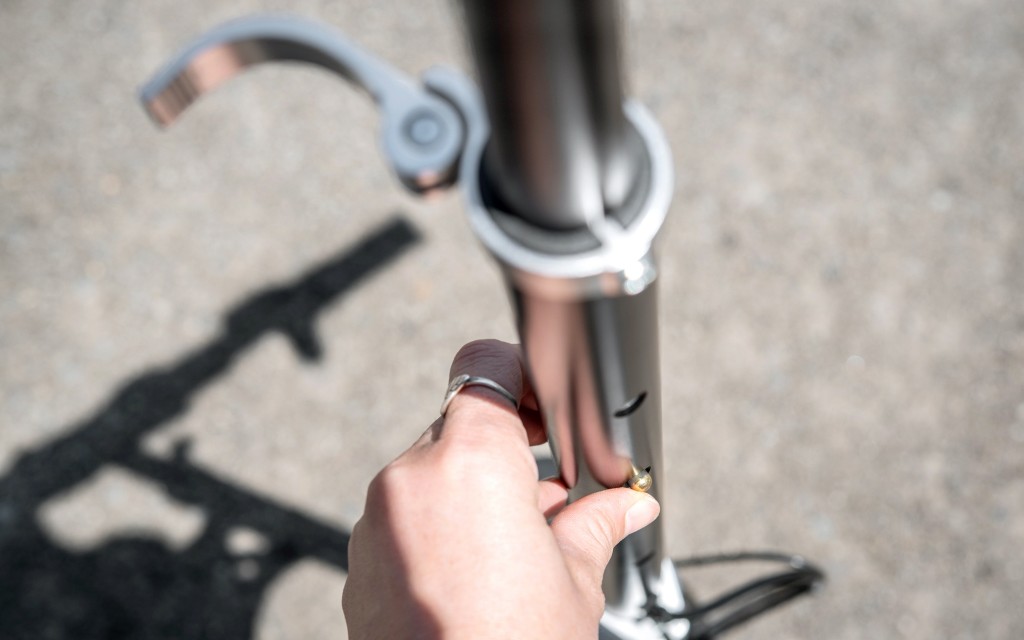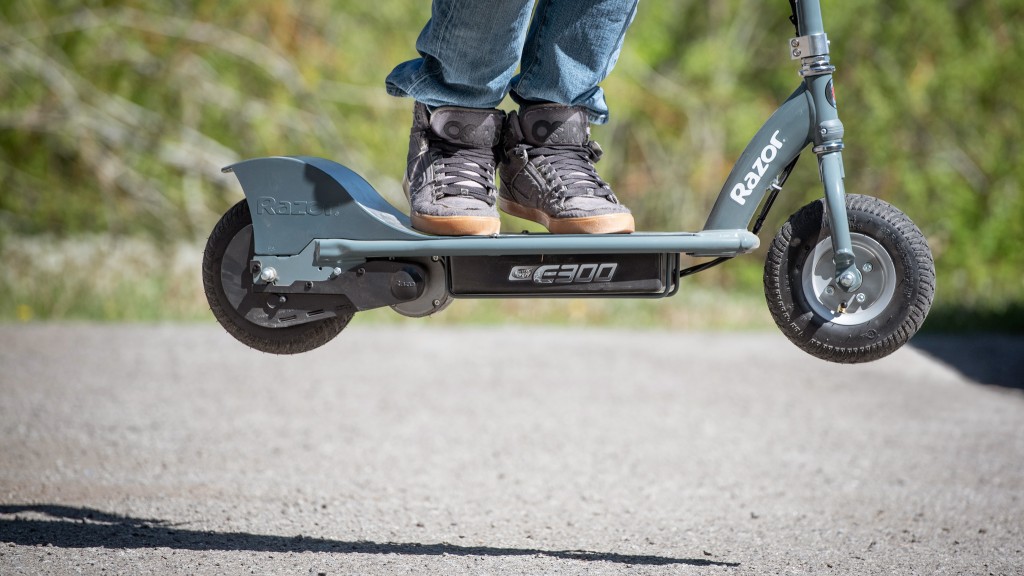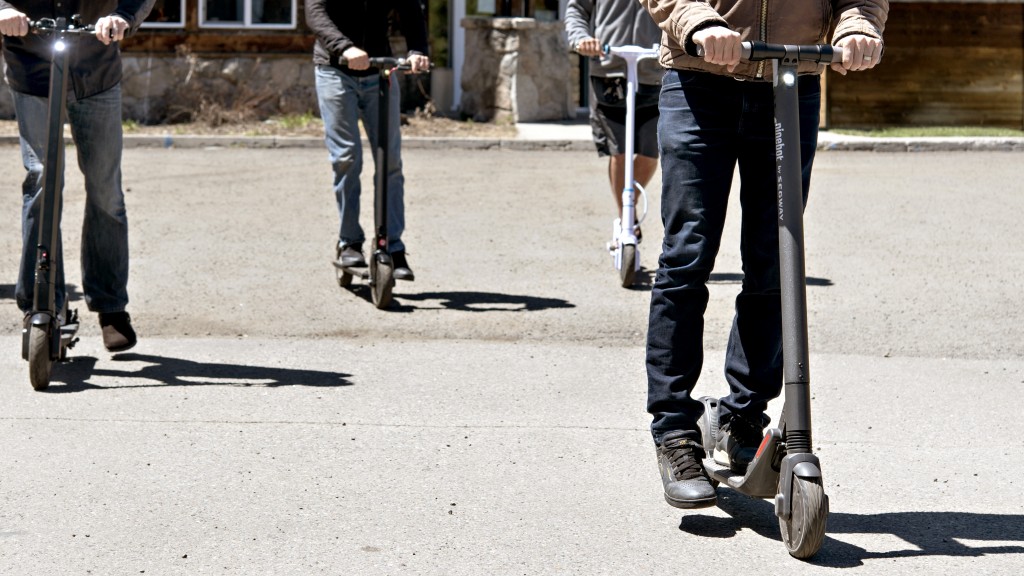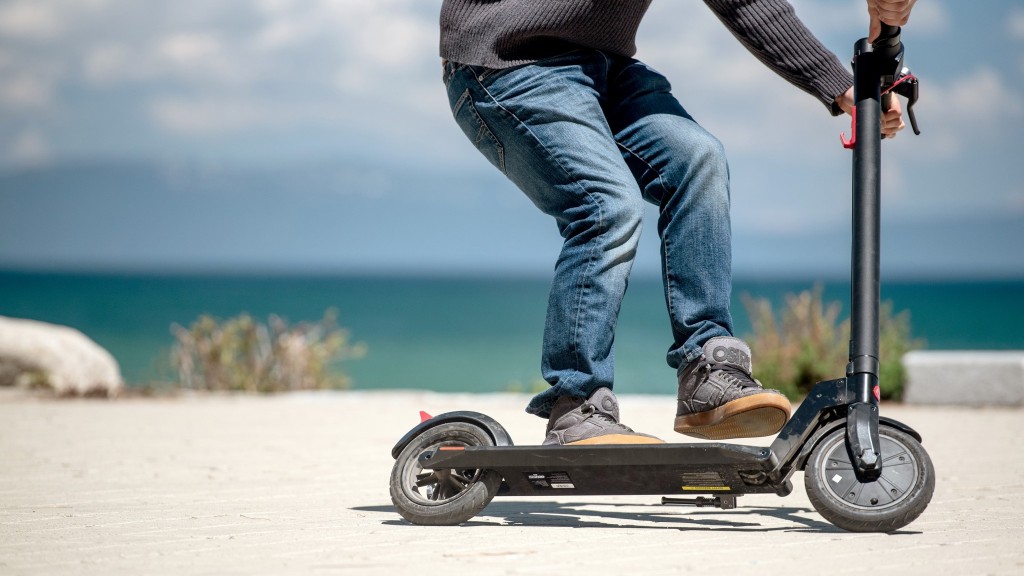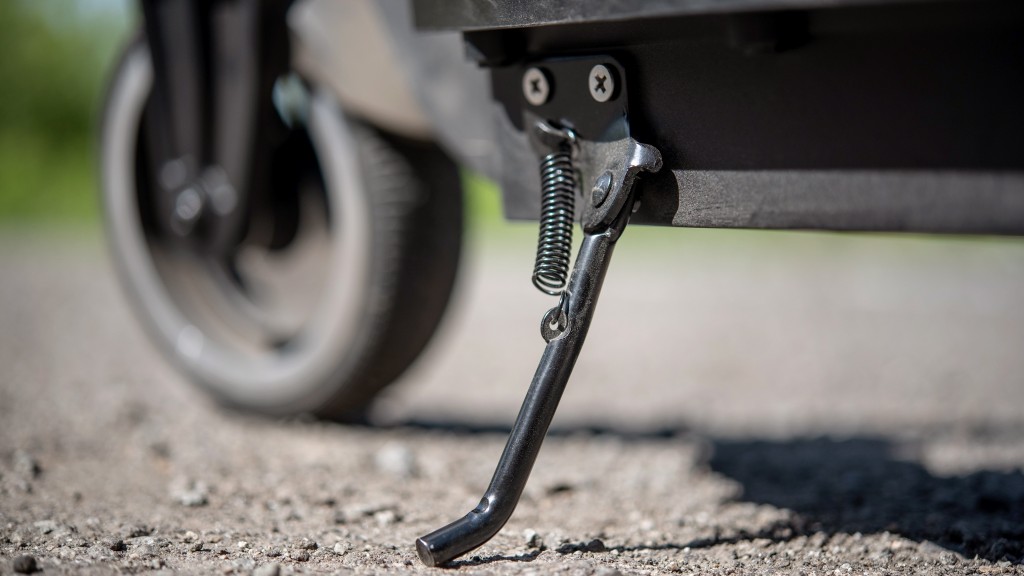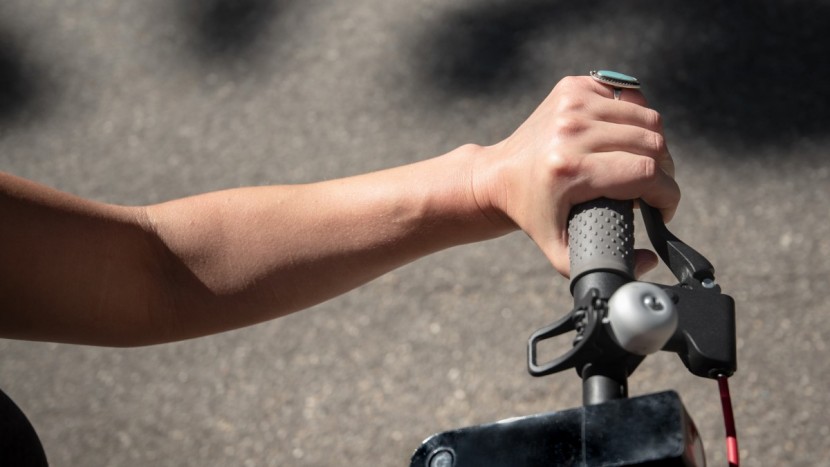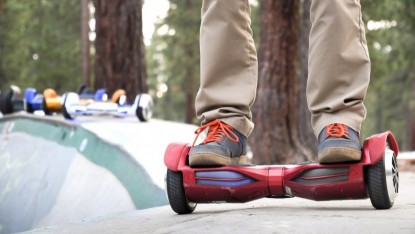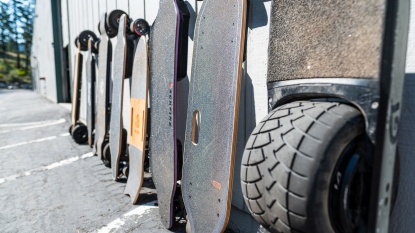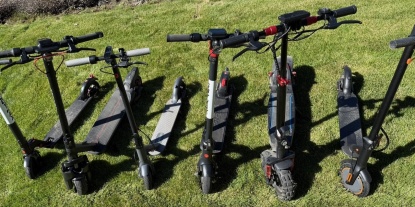Do you need help picking the ideal electric scooter for yourself or a loved one? Or, are you interested in getting some information about the zippy, two-wheeled machines that have taken your city by storm? If you're reading this, the answer to at least one of these questions is likely yes. We know how confusing and, at times, frustrating product research can be, especially if all you want to do is go scootering. Rest assured, our buying guidance is derived from our extensive experience testing and analyzing these products. More to the point, our consumer advice is laid out in a simple, step-by-step format that asks and answers all the right questions. Our aim here is to pass the knowledge from our extensive product reviews down to you so you don't have to learn the hard way. For a comprehensive, side-by-side look at top models, check out our scooter review.
It might seem obvious if you've ridden one of these scooters before (even for a few minutes), but some people might be wondering: why these things are so popular. Electric scooters solve many problems, and unlike many problem-solving activities, this one is fun. A lot of people living in congested cities and bustling tourist towns need convenient, compact, inexpensive transportation, yet they don't want to get sweaty riding a bike or have to develop a new skill that is needed for skateboarding.
Electric scooters check all of the boxes above and, in doing so, essentially eliminate The Last Mile Problem belabored by public transportation analysts. Compared to a car, they are very inexpensive, although we wouldn't describe them as cheap. Compared to a skateboard or bike (including electric models), they are easy to use. They can also easily be folded up for storage in a closet, cubicle, or car trunk.
That is not to say that scooters are without downsides. Many cities have laws regulating their use, and they pose safety concerns. You should investigate the laws in your locale. In the event of a fall, personal protection devices—such as helmets and knee and elbow pads—should be worn.
Okay, fine print aside, let's climb the decision tree to purchase one of these puppies.
Step 1: Who will ride the Electric Scooter?
The first consideration when purchasing a scooter should be the size and age of the rider. Many people purchasing these machines for themselves have a good idea that their kids will also want to cruise them around. Or, perhaps, they are looking for their kids exclusively. Whatever the scenario, size matters. Most of these scooters lack adjustability, so it can be difficult for younger/ shorter riders to access the handlebar comfortably. Moreover, the controls on the handlebar, such as the brake lever, may also be difficult to get a smaller hand around as the gap between the lever and grip may be too wide. The scooters with adjustability only have it in the steering column, which will raise and lower the handlebar height but does not address the hand size issue.
On the other end of the spectrum are large and/ or heavy riders. All scooters have a load limit, and these limits vary depending on the motor and battery used on the scooter. So, if you're a retired NFL linebacker and want to take advantage of a scooter's full potential, then check the max load specs on scooters.
Step 2: How will the Electric Scooter be used?
If you've read this far, you probably know how and where the scooter you're shopping for will be used. You might think to yourself man; I sure would like to lower my money on taxis. Or, It'd sure be fun to rip one of these guys around the skate park with the kiddos! Still, others may have both a commute and some recreation in mind. The good news is that many models on the market can do both, but there are some important items to consider for both usages.
Let's start with commuting. An important question to answer is how far you intend to commute. Based on our testing, the higher-end models have a maximum flat-ground range of ~13 miles before the power decrease slows the crawl pace. If your commute is longer than 40% of the scooter's maximum mileage, you'll need to charge the battery before your return trip.
Long commutes may be somewhat taxing on the body. Each bump and crack in the road will start to add up as you absorb these impacts in your hands and feet. Some models sport pneumatic (air-filled) tires, which go a long way to mitigate this issue. Additionally, commutes in heavily congested areas will require increased expected and otherwise stops. In this scenario, a dual brake system is a real advantage. The electric motor brake in the front and a fender brake in the rear dramatically increase braking power and offer redundancy in a critical safety system.
Recreational applications can place fewer demands on an electric scooter. Why might that be? Well, for starters, the rider doesn't have the predefined distance requirement of the daily commuter. A super-powerful brake system might not be needed either, as usage is often narrowed to off-street travel, say on a bike path or in a park where obstacles are more predictable. Concerns of comfort may not be as high on the wants list as you can stop riding if the experience becomes uncomfortable. However, given the option, having a comfortable, powerful, and long-lasting ride is preferred regardless of the intended use.
Portability is an important consideration for both commuters and recreational riders. You'll need to get off your scooter at some point, and you'll need to transport and/or store it. Most scooter models have a folding steering column that becomes a handle, and some can be rolled like a dolly when folded. Consider how much you'll be carrying the scooter, the trunk space available to transport it, and the storage space you have at home and work.
If long commutes are the norm, you might consider an electric bicycle. We have yet to do a full review of these products. However, we have been playing around with a few models, and what we've seen is impressive. They are often faster than scooters and will propel the rider further. Additionally, they can still be peddled home if the battery runs out.
Step 3: Topography and Road Conditions
The next questions you'll want to ask yourself concern the terrain and surface conditions where you intend to use your scooter. Again, this becomes more important for the commuter or everyday user, but the recreational rider should consider them as well. If you live in a relatively flat area like Chicago, then topography might not be that big of a concern. However, if you live in a hilly city like Seattle, you'll want to pay close attention to how the scooter you're looking at performs on steep climbs and, more importantly, how well it descends.
Like topography, road surfaces are less obvious but an important consideration. What do we mean by road surfaces? Here, we're less concerned about the construction material (like concrete) than we are about the condition of that material. Here are some things to ponder: do the roads you intend to ride on have rough surfaces? Exposed aggregate? Loose debris? Do they have lots of cracks, bumps, or potholes?
The focus of these questions isn't to be overly critical of all the surface streets in your area. Rather, you need to acknowledge that if your roads are rough, the features that help mitigate the feedback delivered to the hands and feet should be considered. The main feature to focus on here is wheel type: look for larger (wider and taller) pneumatic tires. An air-filled tire's inherent giveacts as a dampener that reduces vibration and jarring. Pneumatic tires also get a better grip, particularly on loose surfaces, as they conform to the road when weighted.
Another option to enhance ride quality is to look for front or rear shocks. The shocks have an allotted amount of travel to absorb imperfections you may encounter on the road. These models typically cost more, but they offer a superior ride.
Step 4: Budget
Last but certainly not least are budgetary concerns. The price spread across the scooter market is fairly wide. Getting yourself onto a low-end model will cost you three to four hundred bucks, while the higher-end models will cost a couple hundred more. However, with the information we've provided, you can isolate the scooters with the features you want without getting stuck paying for features you don't care about. We suggest that you outline the most important features based on your intended use and the specific conditions in your area. The suggested outline might look something like the following example:
Let's say that you're primarily going to use your scooter for commuting to and from work in conjunction with a train ride. You'll spend 4 miles a day on the round trip on the scooter. Let's also say that your city is fairly flat and the surface streets are reasonably well maintained. You'll need to carry the scooter in and out of the train station and then fit it into the elevator at your place of work, where it will be stored in a broom closet. You also have some wrist issues from a fall you took skiing some years back, and you don't want to aggravate that old injury. Finally, you are willing to spend five to eight hundred dollars because you'll save at least that much in a year on tolls, parking, and insurance by using a scooter during the week instead of your car.
Based on what this hypothetical consumer has described, they don't need a high-end scooter. The commute mileage is well within the battery life of most models. The topography in their area is predominantly flat, so hill-climbing power isn't a requirement. That may also pass on a dual brake system, which is a requisite for steep hill descents. However, having two brakes is a nice safety redundancy. They do need to focus on scooters that are reasonably lightweight and compact. Scooters with the ability to roll when in the folded configuration would be nice, too. Despite the fairly smooth road conditions in their area, pneumatic tires are still a good idea; they're just more comfortable and grippy.
Referring to our Electric Scooter review, our hypothetical consumer would find several competitively priced models that fit this description.
There are several other little goodies sprinkled on the scooters that are worth considering as well. Some models have lights illuminating the ground before and below the rider. This is important if you think you'll be scootering in the dark. Dashboard displays indicating battery status, speed, lights, and gear are also available. A few models even offer an app that pairs with the scooter to monitor performance and safety. Finally, several models come with a handlebar bell, which, while not high-tech, is quite useful for politely announcing your presence when approaching pedestrians from behind.
Anatomy of an Electric Scooter
Most scooters on the market are intentionally simplistic in design, but that doesn't mean the subtle differences aren't significant. Below is a breakdown of the components that collectively comprise a scooter's anatomy.
Batteries
Most scooters now utilize lithium-ion battery technology. These batteries are safe, light, reliable, and have relatively short recharging times. At least one scooter on the market uses a sealed lead-acid battery, but we don't recommend it.
Brakes
Three types of brakes are generally employed on these machines: disk, motor, and fender brakes. In most cases, these brakes are paired as disk + motor or fender + motor.
Electronic Motor Brake: This frictionless brake system reverses the magnetic polarity, driving the motor to halt it instead. This process is regenerative and will put some energy back into the battery.
Deck
The standing platform. It comes in several different configurations.
Fenders
Handlebars
Steering Column
Suspension
Tires
Flying with an Electric Scooter
Our research has not uncovered a scooter that complies with the FAA's regulations for lithium-ion batteries in carry-on or checked baggage compartments (anything greater than 160 watt-hours is prohibited). If you need a scooter after air travel, it may prove useful to investigate whether one of the ever-growing scooter rental services is available at your destination.
Concerns
Many scooters available today have cruising speeds of 10-30 mph. While this doesn't sound that fast, it is enough to get your attention if you fall or run into something. Accordingly, we recommend that you wear a helmet when scootering. Additional personal protective equipment, such as knee and elbow pads, is not excessive. Moreover, if you are concerned about a child going too fast, you may select a scooter with a lower maximum speed.
Conclusion
We hope that you have found our buyer's guide useful and informative. It is the product of many hours of research, testing, and analysis. This document is meant to convey general information about a class of products. However, if you want detailed information about electric scooter models, please check out our comprehensive electric scooter review.

